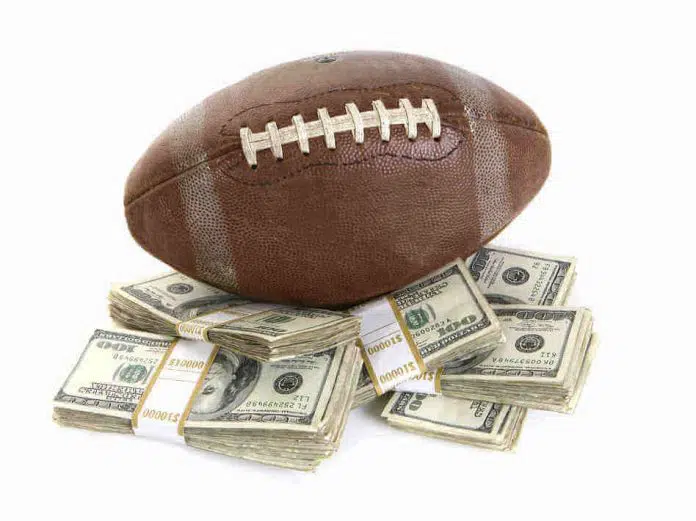After straight bets, parlay betting is the most popular form of sports wagering. Gamblers love parlays because of the potential to win much larger amounts than if you were to place a straight bet.
What is Parlay Betting?
A parlay, or accumulator bet, is a selection of two or more point spreads, over under, or money-line bets linked together. In order to win the parlay, all of the individual bets must win. Any losing bet will make the parlay a loser. The more picks in the parlay, the more risk and the higher the payoff. So when you add more bets to your parlay, you increase your potential payout.
Example:
Let’s say the New York Jets (-1) are playing the Dallas Cowboys. At the same time, the New England Patriots (-7) are playing the Carolina Panthers. You believe both the Jets and the Patriots will cover their respective spreads.
So instead of placing two straight bets, you can place a parlay. You win if you’re right about both games. However, you lose if one of the teams fails to cover the spread.
What’s So Great About Parlay Bets?
Bettors find parlays more exciting because of their big potential returns. The payout odds at sportsbooks for parlays are +260 for 2-team parlays and +600 for 3-team parlays.
For example, if you straight bet $110 to win $100 on NYJ at -1 (-110), and $110 to win $100 on Carolina +7 (-110), and both won, you would win $200.
But if you instead put $100 on a 2-team parlay of NYJ -1 (-110) and Carolina +7 (-110) and both won, you’d profit $260 ($100 x 2.6 = $260).
Bookmakers love parlays because they force bettors to correctly pick every leg. In the example above, if the bettor went 1-1 instead of 2-0, with two straight bets they would have lost only $10, but with the parlay they lost the entire $100. With a three-team parlay, the bettor must win 3-0. That mean a normally profitable 2-1 is still a losing wager.
It is difficult enough to pick winners with straight bets, so even with the increased payouts, parlays usually aren’t great betting strategies in the long run. The only good time to bet parlays is when they are correlated.
What is a Correlated Parlay?
There was a time when sportsbooks still accepted correlated parlays. That soon changed after they realized that there was a significant player’s edge. Today, true correlated parlays won’t be accepted by any of the top sportsbooks.
A correlated parlay is when you try to parlay two events that directly relate to each other. An example would be betting on a team to win both the first half of a game and the entire game. You can, however, wager on a team and the over/under in the same game.
So say Baltimore is -7 against Dallas (+7). You like Dallas, but feel they are no match for Baltimore’s offense. You believe if they cover, it will need to be in a low scoring game. In this situation, it makes sense to parlay Dallas +7 and the UNDER.
The events are correlated since you expect Dallas to cover only with a strong game defensively. This is an ideal case you would want to use correlations when using parlays.
Sports Betting Tips for Parlay Payouts
When choosing a sportsbook, try and find one that calculates parlay payouts based on “true odds”, which depend on how many teams are selected and the odds on those teams.
True odds will always yield a higher payout than the approximate payout values that some other sportsbooks offer. If each pick of your parlay is the standard -110 line (i.e., where you must wager $110 to win $100) then the chart below will give you an approximate estimate of your payout :
Payouts Based on Parlay Size
| Parlay Size | Payouts |
| 2-Team | 2.645/1 |
| 3-Team | 5.958/1 |
| 4-Team | 12.283/1 |
| 5-Team | 24.359/1 |
| 6-Team | 47.413/1 |
| 7-Team | 91.424/1 |
| 8-Team | 175.446/1 |
| 9-Team | 335.852/1 |
| 10-Team | 642.082/1 |
| 11-Team | 1226.701/1 |
| 12-Team | 2342.793/1 |
(Odds courtesy of Bovada.lv)
Simply multiply the odds by your bet amount, to calculate your winnings. For example, suppose you bet $100 on a two-team parlay where the odds of both picks are -110. You could potentially win $260.45 ($100 x 2.645/1). Your total payout would be $360.45 (the $260.45 you won plus the $100 you wagered).
For parlays involving moneylines or picks that are not -110 (i.e. -105, -115, -125, etc), you need to first find the multiplier for each pick in the parlay and then multiply your bet amount by the product of the multipliers. You can calculate the multiplier by simply taking the inverse of the moneyline odds and adding 1 if it’s a favorite (minus). For example, 1/1.40 = 0.71 plus 1 equals 1.71. Alternatively, if it’s an underdog (plus), simply add 1. So, 1.20 + 1 = 2.20.
Let’s say you bet $100 on a two-team parlay where the odds of the two picks are -140 and +120:
| Moneyline | Multiplier |
| -140 | 1.71 |
| +120 | 2.20 |
Your total payout, which is your winnings plus your original wager, is calculated as follows: $100 x 1.71 x 2.20 = $370.62.

